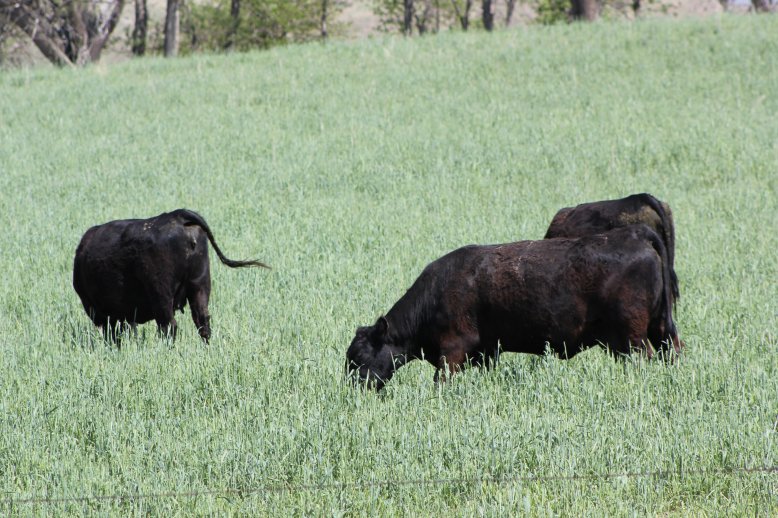
By Bruce Anderson, UNL Forage Specialist
WINDROW GRAZING TO EXTEND GRAZING, PRESERVE QUALITY
How do you handle pastures that grow too fast? That’s what brome as well as crop fields planted to oats or cereal rye for grazing have done lately. There are several options.
The most obvious way to conserve extra growth is by cutting hay from parts of the pasture. Normally I try to avoid extra hay cutting but if you have the equipment and more pasture than you can use this spring, and some time, cutting hay for use later in summer or winter is a good option. It might be especially wise for crop fields where you can plant another crop after removing the hay.
If you instead decide to graze, obviously you can graze them as normal, but that will waste a lot of feed. There are ways, though, that might reduce waste and keep forage quality a little higher.
One option is to move animals through multiple pastures very quickly. Fast moves can accomplish two things. First, animals move more frequently into fresh pasture so they have more opportunities to select the best quality forage to graze. And second, more leaves are left behind to encourage more rapid regrowth. Extra cross fencing might be needed, though, to assure sufficient recovery periods.
This fast move option probably is not very suitable for oat or rye pastures that are unlikely to regrow much no matter how you graze. Here, windrow grazing might be a better option. To try it, first cut and windrow a couple week’s worth of pasture. Then build an electric cross fence that gives them just a couple days worth. When they finish that piece, move the fence to give them some more windrows. As they near the end of the windrows you already cut, lay down another patch and repeat this strip grazing of windrows as long as you wish or can.
Windrow grazing sometimes doubles the number of grazing days compared to regular grazing. Maybe it can work for you, too.
AMMONIATE WHEAT STRAW FOR EXTRA FEED
Wheat harvest can produce a lot of straw. That straw can make good feed for your dry stock cows, especially if you treat it with anhydrous ammonia.
Do you need to rebuild your hay supplies following last winter? Treating wheat straw with anhydrous ammonia can make it almost as digestible and as readily eaten as average prairie hay. This could help stretch your hay supply. But you have to do it right.
Bale straw soon after grain harvest, preferably with some moisture or dew on it. Then, gather bales into rows that are stacked like a pyramid. Next, cover the entire stack with one sheet of 6 to 8 millimeter black plastic. Use ropes or other methods to hold plastic in place. Make sure that you seal the edges of the plastic on the ground with loose soil to prevent leakage. Once that is done, you are ready to insert a pipe on the ground into the center of your stack and attach the pipe to the anhydrous tank.
Be careful - ammonia can be dangerous. Slowly turn on the anhydrous until the plastic balloons slightly. Don't go too fast or the plastic can rupture. Next, check and repair any leaks. Continue to add anhydrous slowly until you have added 60 pounds per ton of straw. Take about 10 minutes for each ton of straw.
When you are through, turn off the tank, remove the pipe, and seal its opening. Keep the plastic on the stack until about a week before feeding. Then open one end to allow any excess ammonia gas to escape.
If you can’t remember all these steps, there are instructions on ammoniating crop residues on-line at http://beef.unl.edu/web/cattleproduction/ammoniatingcropresidues. Done correctly, ammoniated wheat straw could be a very valuable feed.
For more UNL Beef information go to http://beef.unl.edu